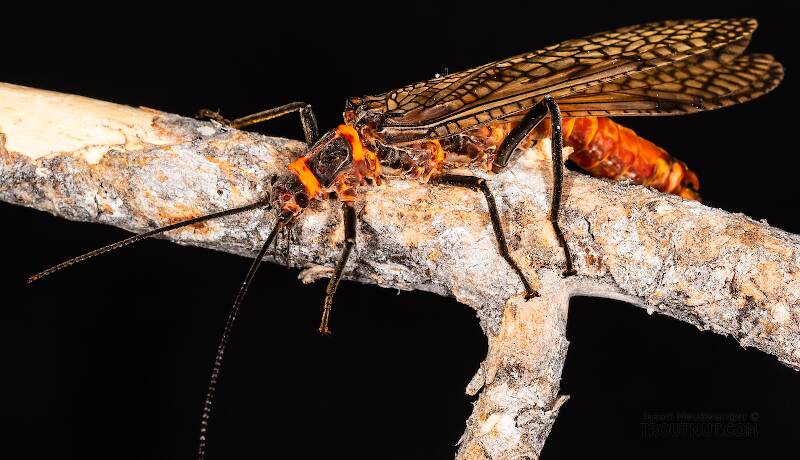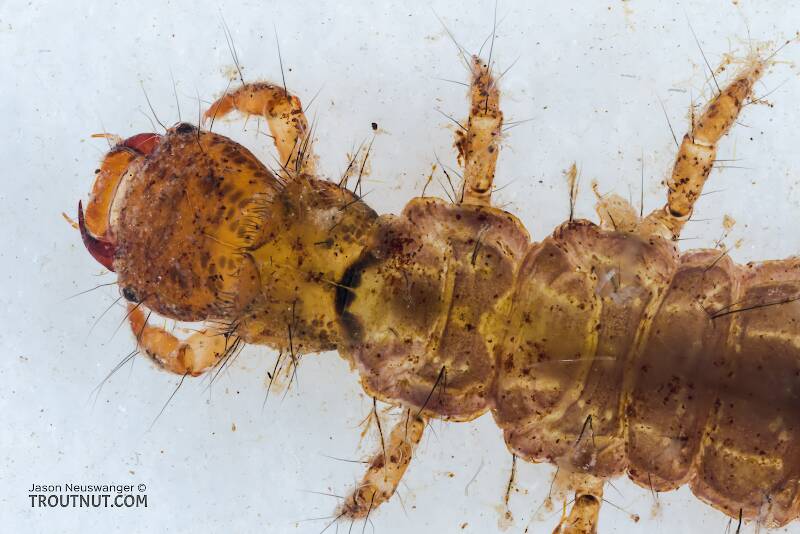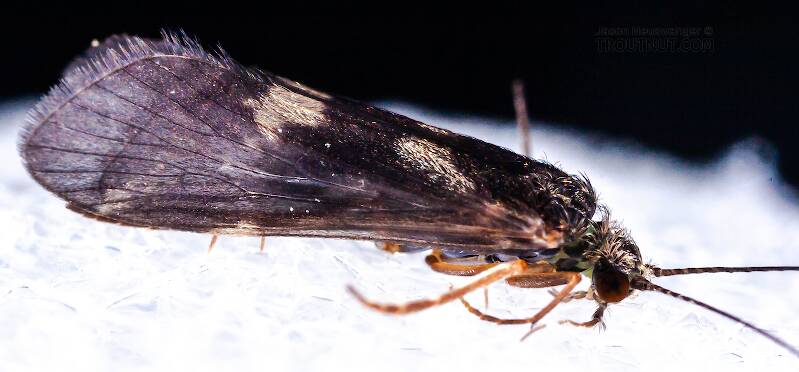
Salmonflies
Pteronarcys californica
The giant Salmonflies of the Western mountains are legendary for their proclivity to elicit consistent dry-fly action and ferocious strikes.
Featured on the forum

This one seems to tentatively key to Holocentropus, although I can't make out the anal spines in Couplet 7 of the Key to Genera of Polycentropodidae Larvae nor the dark bands in Couplet 4 of the Key to Genera of Polycentropodidae Larvae, making me wonder if I went wrong somewhere in keying it out. I don't see where that could have happened, though. It might also be that it's a very immature larva and doesn't possess all the identifying characteristics in the key yet. If Holocentropus is correct, then Holocentropus flavus and Holocentropus interruptus are the two likely possibilities based on range, but I was not able to find a description of their larvae.

Troutnut is a project started in 2003 by salmonid ecologist Jason "Troutnut" Neuswanger to help anglers and
fly tyers unabashedly embrace the entomological side of the sport. Learn more about Troutnut or
support the project for an enhanced experience here.
Litobrancha on Oct 20, 2006October 20th, 2006, 7:59 am EDT
a great thing about cheumatopsyche (which i believe this is) is that the IX segment ventral plates are almost always completely differentiated to the base. hydropsyche medial margins are more indistinct near the base.
also cheumatopsyche almost always lacks F1 in the hind wings, although aberrant specimens are common. the best character is the distance between M and Cu veins in the hind wing, other hydropsychids are parallel and close together, cheumatopsyche diverges a bit.
also cheumatopsyche almost always lacks F1 in the hind wings, although aberrant specimens are common. the best character is the distance between M and Cu veins in the hind wing, other hydropsychids are parallel and close together, cheumatopsyche diverges a bit.


